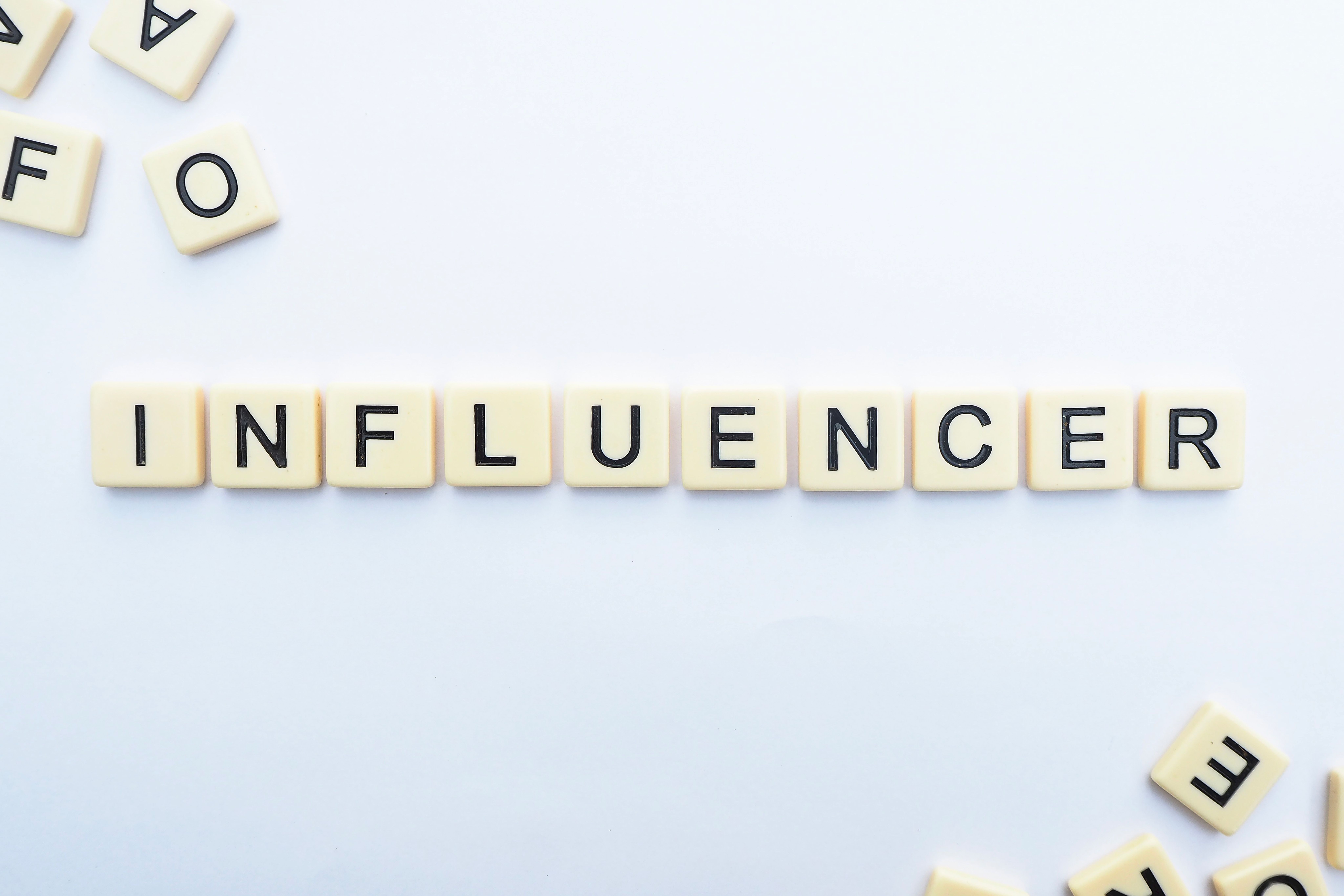Influencer marketing will look different in 2025.
Don’t worry–we got you! We’re using research and our years of experience with influencer marketing to bring you the top influencer marketing trends for 2024 and beyond.
In this article, you’ll learn the most important trends to watch and how we expect them to change in 2025, 2026, and beyond. It’s not just influencer marketing news–it’s solid predictions of what we expect to happen in the future of influencer marketing.
Oh, and a quick note: some of this list might sound advanced, but you’re probably already using most of it in small ways. As technology advances, you can expect integrations that make it easier to use.
What is influencer marketing?
What is the premise behind influencer marketing? The best way to answer this question is by defining “influencer.”
An influencer is someone who has a social media following–generally at least 5,000 followers on Instagram or TikTok. Influencers are mini-celebrities in their little corners of the internet, and people can be fiercely loyal to them. It’s this loyalty and trust that brands can leverage with influencer marketing.
In influencer marketing, brands pay influencers to promote their products. The influencer films or photographs themselves using the product, and recommends it, and the brand benefits in increased sales, exposure, and positive vibes from the influencer’s audience.
Influencer marketing, like everything else, has evolved over the years. What started with paying celebrities to endorse products has become an opportunity for influencers with even modest followings to collaborate with brands–saving brands money and providing an opportunity for smaller creators to make a little income. And it’s going to change even more in the years to come.
Let’s examine some influencer marketing trends we expect to shape the future of influencer marketing:
Brands will prioritize micro and nano influencers more
Nano (1-5K followers) and micro-influencers (5-50K followers) have traditionally been ignored by brands because they have lower reach than macro and mega influencers.
However, starting slowly in the 2020s, brands realized the untapped potential of nano and micro-influencers. A Linquia survey in 2021 indicated that 90% of marketers wanted to work with micro-influencers.
Since then, it’s gone from “Oh yes, we’d like to work with them and larger influencers too” to “Oh my goodness, why are we paying anyone EXCEPT smaller influencers?” Because they have higher engagement rates (use an engagement calculator to check it) and are more cost-effective, we’ve seen brands prioritize working with smaller creators over all other influencers!
However, this trend has been on a SLOW upswing for one reason: Micro and nano influencers are more challenging to find.
We expect this shift toward nano and micro-influencers to continue in 2025 and beyond, with the following factors helping it along:
- AI tools will make it easier and more efficient for brands to find smaller creators who are an excellent fit for their marketing.
- More industries will tap into the micro and nano influencer trend–it won’t just be fashion and beauty!
- As the micro and nano influencer markets become popular, brands will focus on long-term partnerships with smaller creators rather than one-off campaigns.
Social Cat is a great place to connect with micro or nano influencers. Our platform has over 30,000 micro and nano influencers.
AI and data-driven influencer marketing will change the game
Brands can already use AI tools (usually for a pretty penny) to analyze data to find influencers. AI tools are also helpful for running campaigns: you can use them to write captions and generate scripts, just to name a few examples.
So, while AI is ALREADY changing the world of influencer marketing, we expect this to happen even more in the coming days. Here are some trends to watch:
- Enhanced predictions. As AI leverages larger datasets and becomes even more sophisticated, brands can get higher predictions on campaign performance and how to optimize their campaigns before launching–a considerable time and money saver for brands.
- Comprehensive analysis. Many influencer marketing tools only do one thing well. As AI becomes more sophisticated, expect to see tools that integrate several elements (like fake follower checks and engagement quality) into one-stop shops that analyze everything at once.
- Granular insights. Hopefully, AI will grow to the point that you’ll be able to get more precise feedback on specific campaigns and pieces of content.
- Campaign management. AI also makes influencer campaign management more automatic–from outreach to scheduling. As a result, we may see greater demand for influencers because managing campaigns will be less operationally intense.
- Content. And, of course, we can’t talk about AI without mentioning AI-generated content. AI is changing how we create, and it will continue to help influencers and brands generate captions and visuals and produce videos.
By far, though, the most exciting part of AI's future is that it’ll enable brands to do all of these things based on data-driven logic. With each campaign, you’ll be doing less and less guessing because you’ll have a ton of data analysis to work with.
Diverse and inclusive campaigns will become the norm
It’s time for change–consumers demand more representation and inclusivity, so you can expect a more significant focus on diversity. Brands will start being more inclusive to stay on top of trends and appeal to a bigger audience.
Here’s how that might look in the coming years:
- Brands will prioritize collaborating with influencers from diverse backgrounds.
- Inclusivity will no longer be optional. Brands that don’t adopt the trend might be slowly called out or ignored by customers.
We’re already seeing this happen with big brands constantly running inclusive influencer campaigns. Expect this trend to only pick up steam from here (and for good reason!).
Live shopping will get bigger
In case you haven’t hopped on the live shopping train yet, allow us to explain how it works:
With live shopping, influencers or brand representatives show products over a live stream. Viewers can see how the product works, ask questions, and even buy it right on the live stream. Imagine QVC but with a comments section.
Live shopping has been steadily growing in popularity, with HUGE followings in China and on TikTok. With that in mind, expect to see the following trends:
- Live shopping will become more integrated with e-commerce platforms. For starters, you’ll see real-time inventory updates, personalized shopping experiences, and even AI voice technology to enhance customer interaction and engagement during live streams.
- Creators will use AR and VR to create immersive shopping experiences. You’ll be able to try things on or see them virtually in different environments.
- Move out of the way because live shopping is about to become a CORE strategy for many brands and influencers. No longer an exclusive club for early adopters, social media sites will make live shopping even more accessible, and you’ll continue to see companies like Amazon emphasizing it.
- Real-time interaction with hosts will help build trust and credibility for products since viewers will see the product in use and get instant answers to their questions.
If you’d like to see some examples, here are some brands who are doing live shopping well:
- ITEM Beauty by Addison Rae
- Poshmark (with their “Posh Shows” and “Posh Parties”)
- TikTok influencers like kimchichic doing live shows
The rise of virtual and AI-generated influencers
AI-generated influencers like Lil Miquela are gaining popularity, offering brands creative, controlled collaborations. The beauty of a virtual/AI-generated influencer is that you control the messaging and branding even more than with human influencers.
Plus, they’re way more predictable than people who can be uncooperative, get offended if you don’t like their ideas, or ghost you.
These influencers excel in the fashion, gaming, and tech industries, where innovation and futurism are celebrated. Just be sure you know your audience before employing a virtual influencer because if they don’t see the difference between an AI and a human influencer, they might feel duped.
Greater focus on long-term influencer partnerships
Brands are moving away from the one-off campaigns of the past. If they can afford to, they’re investing in influencers who will be consistent brand ambassadors. There are a couple of reasons for this:
- Long-term partnerships allow influencers to align more authentically with brand values, creating trust with their audience.
- These partnerships provide more consistent results and a stronger ROI than short-term collaborations.
This makes sense–if an influencer makes one post about a brand but never mentions it again, their followers won’t register it as important. But if they have an ongoing partnership where they talk about it all the time, their fans WILL notice. And that attention will result in more sales over the long haul.
One way to capitalize on this trend is to start thinking with a long-term lens with your brand’s influencer collaborations. Try to find and recruit influencers that you can turn into brand ambassadors. That way, you can talk to them before they sign deals with your competition.
Social commerce will continue to expand
Social media marketing and selling isn’t going anywhere. It’s only going to grow. Here are a few reasons why:
- Influencers are becoming central to driving sales directly on platforms like Instagram, TikTok, and Pinterest with built-in shopping tools.
- Shoppable videos and posts make it easier for followers to make instant purchases, bridging the gap between discovery and checkout.
- Platforms are improving analytics for tracking conversions, giving brands a better picture of ROI from social commerce campaigns.
So, platforms are making influencer marketing more trackable, easy to do, and central to their operations. This is a solid business choice–they know that the more you can sell via influencer marketing on social media, the better that is for them.
Influencer marketing will extend beyond social media
And social media platforms are RIGHT to make these changes because as more influencers grow their reach, they’re becoming less dependent on social media.
This is one of the influencer trends we can already see reshaping the industry: Influencers are expanding into podcasts, newsletters, and even TV, creating cross-platform visibility for brands.
In the future, blogs and long-form influencer content will become necessary for brands who want to achieve SEO success and deeper audience engagement. Brands will increasingly view influencers as multi-channel content creators, not just Instagram or TikTok personalities.
In other words, influencers will go from being “nice to have” to all-in-one marketing channels that brands can’t ignore. The importance of influencer marketing will only become more evident!
The shift to performance-based influencer marketing
Brands are moving toward payment structures based on conversions, clicks, or sales rather than flat fees.
This makes sense–after all, brands want to ensure they get something from their influencer collaborations. That’s just clever marketing.
Performance-based models also incentivize influencers to create content that directly drives results. Because they’re paid based on how well their posts perform, they’ll take more time to get the right shots, script their content, and develop compelling calls to action.
Tools for affiliate tracking, discount codes, and UTM codes make it easier to measure influencer-driven ROI–and this will only become truer!
So, if you want to get ahead of this, use performance-based metrics in your influencer campaigns–before everyone else in your niche does.
The growing importance of regional and local influencers
If you’re targeting a specific geographic area, you’ll need a way to engage with regional influencers. This is especially true for global campaigns–you need people who have strong cultural relevance and local trust, making them ideal for the country or region that you’re trying to reach.
That’s why we’re proud to connect influencers from all over the UK, US, and AU with brands on Social Cat! They’ll help you reach your niche audiences with people who look, talk, and sound like them.
Local influencers are also particularly effective at influencer marketing for small businesses, especially those with more localized appeal or services. So, if you have a brick-and-mortar element to your business, building a roster of local influencers is important, too.
Brands will lean on UGC from influencers
Brands increasingly use influencers to generate authentic user-generated content (UGC) for their marketing campaigns.
If you’re unfamiliar with UGC, it’s content (videos or photos) created by actual product users. If you see videos on reviews on Amazon, those are UGC. However, so are product reviews that influencers post on social media. So are the unboxing videos that are so popular on TikTok.
Influencers are product users, just like everyone else. And, especially if you give them the freedom to talk about your product in their own words, they can create social proof and trust for your brand–making your paid ads and organic campaigns more effective.
Platforms like TikTok and Instagram are ideal for UGC-focused campaigns because influencers are used to creating engaging, relatable content on those platforms. If you’d like to try it, we have affordable UGC from vetted influencers on our platform.
Video content will dominate influencer campaigns
People have short attention spans and want valuable information fast–and the brands that provide it will win.
However, it won’t just be TikTok that you can use to your brand’s advantage. YouTube Shorts, Instagram Reels, and Snapchat are catching up with this trend and will take chunks of market share.
Short-form videos (Reels, TikToks, YouTube Shorts, etc.) will continue to drive engagement and conversion rates. This is partially because the platforms are pushing them and because people expect that type of content. It’s just a better storytelling medium than photos and text.
To meet the rising need for videos, influencers will invest in better video production tools–like cameras, lighting, and audio equipment–to enhance the quality of their content and attract better brand deals. This is a win for you because getting high-performing UGC will be easier.
Finally, you can expect interactive video formats, like Q&As and tutorials, to become even more popular. After all, direct engagement is marketing gold! It means your followers are invested, allowing you to hear their thoughts on your products and content.
Why staying ahead of trends in influencer marketing matter
For brands, staying ahead of influencer marketing trends means you spend less and simultaneously make more money because you’re using more effective strategies than your competitors.
No, it’s not fair–but you didn’t get into business because you thought it was fair, right? And if you’re doing the work of researching and reading articles like this one for your brand, you might as well reap the benefits!
If you’re an influencer, knowing these trends can help you, too! Because if you can see where the future is going, you can do your best to start preparing for it.
For example, which trends can you jump on before other influencers in your niche? You can build a media empire to be a more appealing prospect for potential brands. Or you could begin up-leveling your video creation skills now to be prepared for the future.
Either way, there are huge competitive advantages to knowing the coming trends in influencer marketing–so we hope you use this information to go out and make more money! Let’s break down how to do that. ⬇️
Using influencer marketing trends to your advantage
So, armed with all this information, how should these trends in influencer marketing change your sales and marketing strategy?
Here are a few ideas to try:
- Start finding micro and nano influencers to partner with your brand continuously. Do this sooner rather than later because, as this trend picks up steam, creating ongoing partnerships may be more challenging and expensive.
- Experiment with platforms that use AI tools whenever you can. (For example, Social Cat integrates with ChatGPT to help you write captions for paid social media ads)
- If you haven't already, emphasize inclusion in your campaigns and work with diverse creators and influencers.
- Experiment with live shopping experiences for your brand–consider hiring influencers to host them!
- Plan to spend more money on short-form videos and advertising that features them.
There are many possible ways to integrate 2024’s influencer marketing trends into your brand’s strategy–even more than we’ve listed here. The most important thing to remember is that you can’t ignore them. These trends are coming and will be more than a passing phase in influencer marketing. The brands that don’t jump on board will find themselves falling behind.
Table of content
- What is influencer marketing?
- Brands will prioritize micro and nano influencers more
- AI and data-driven influencer marketing will change the game
- Diverse and inclusive campaigns will become the norm
- Live shopping will get bigger
- The rise of virtual and AI-generated influencers
- Greater focus on long-term influencer partnerships
- Social commerce will continue to expand
- Influencer marketing will extend beyond social media
- The shift to performance-based influencer marketing
- The growing importance of regional and local influencers
- Brands will lean on UGC from influencers
- Video content will dominate influencer campaigns
- Why staying ahead of trends in influencer marketing matter
- Using influencer marketing trends to your advantage
Looking for influencers?
Table of content
- What is influencer marketing?
- Brands will prioritize micro and nano influencers more
- AI and data-driven influencer marketing will change the game
- Diverse and inclusive campaigns will become the norm
- Live shopping will get bigger
- The rise of virtual and AI-generated influencers
- Greater focus on long-term influencer partnerships
- Social commerce will continue to expand
- Influencer marketing will extend beyond social media
- The shift to performance-based influencer marketing
- The growing importance of regional and local influencers
- Brands will lean on UGC from influencers
- Video content will dominate influencer campaigns
- Why staying ahead of trends in influencer marketing matter
- Using influencer marketing trends to your advantage

About Stefan A.
Stefan is a Growth Marketer turned founder with a background in customer acquisition, Influencer Marketing, and early-stage startups. At Social Cat, Stefan drives day-to-day operations and growth, helping small brands connect with the right influencers to scale their reach and impact.









